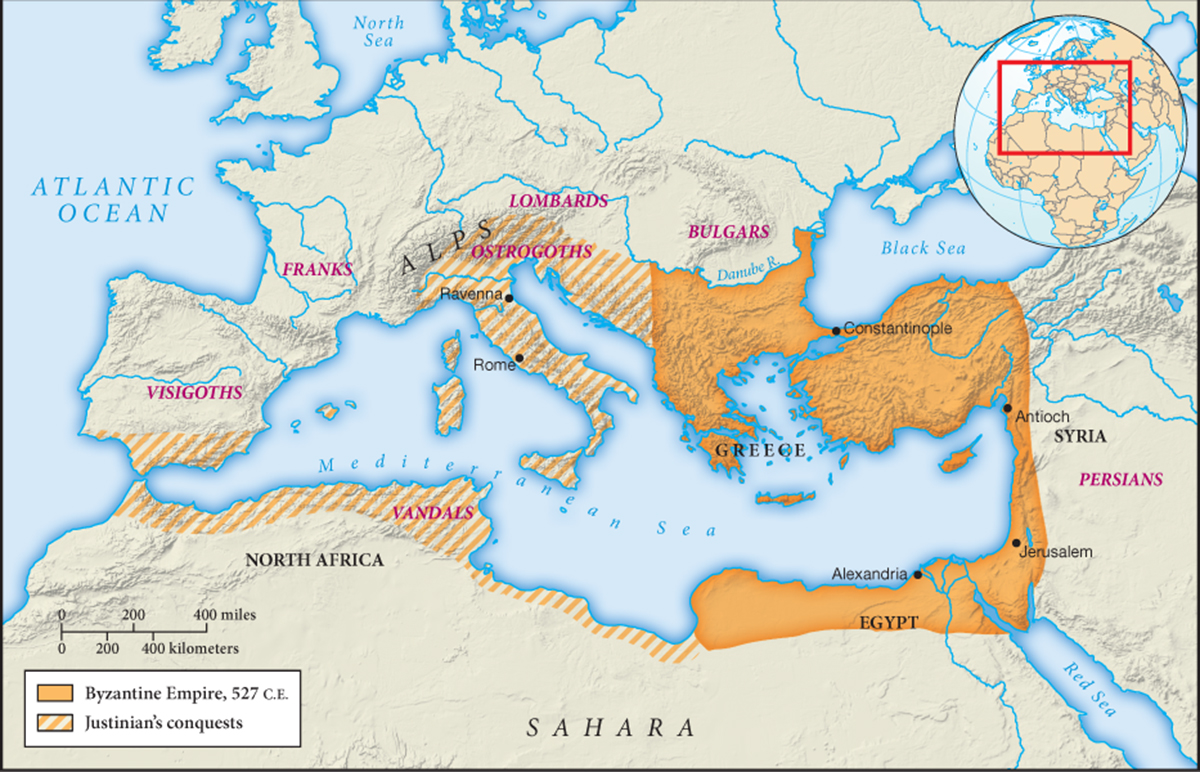The Byzantine State
Perhaps the most obvious change was one of scale, as the Byzantine Empire never approximated the size of its Roman predecessor (see Map 10.1). The western Roman Empire was permanently lost to Byzantium, despite Emperor Justinian’s (r. 527–

In its heyday, the Byzantine state was an impressive creation. Political authority remained tightly centralized in Constantinople, where the emperor claimed to govern all creation as God’s worldly representative, styling himself the “peer of the Apostles” and the “sole ruler of the world.” The imperial court tried to imitate the awesome grandeur of what it thought was God’s heavenly court, but in fact it resembled ancient Persian imperial splendor. Aristocrats trained in Greek rhetoric and literature occupied high positions in the administration, participating in court ceremonies that maintained their elite status. Parades of these silk-
After 1085, Byzantine territory shrank, owing to incursions by aggressive Western European powers, by Catholic Crusaders, and by Turkic Muslim invaders. The end came in 1453 when the Turkic Ottoman Empire, then known as the “sword of Islam,” finally took Constantinople. One eyewitness to the event wrote a moving lament to his fallen city:
And the entire city was to be seen in the tents of the [Turkish] camp, the city deserted, lying lifeless, naked, soundless, without either form or beauty. O city, head of all cities, center of the four corners of the world, pride of the Romans, civilizer of the barbarians…. Where is your beauty, O paradise … ? Where are the bodies of the Apostle of my Lord … ? Where are the relics of the saints, those of the martyrs? Where are the remains of Constantine the Great and the other emperors? … Oh, what a loss!7